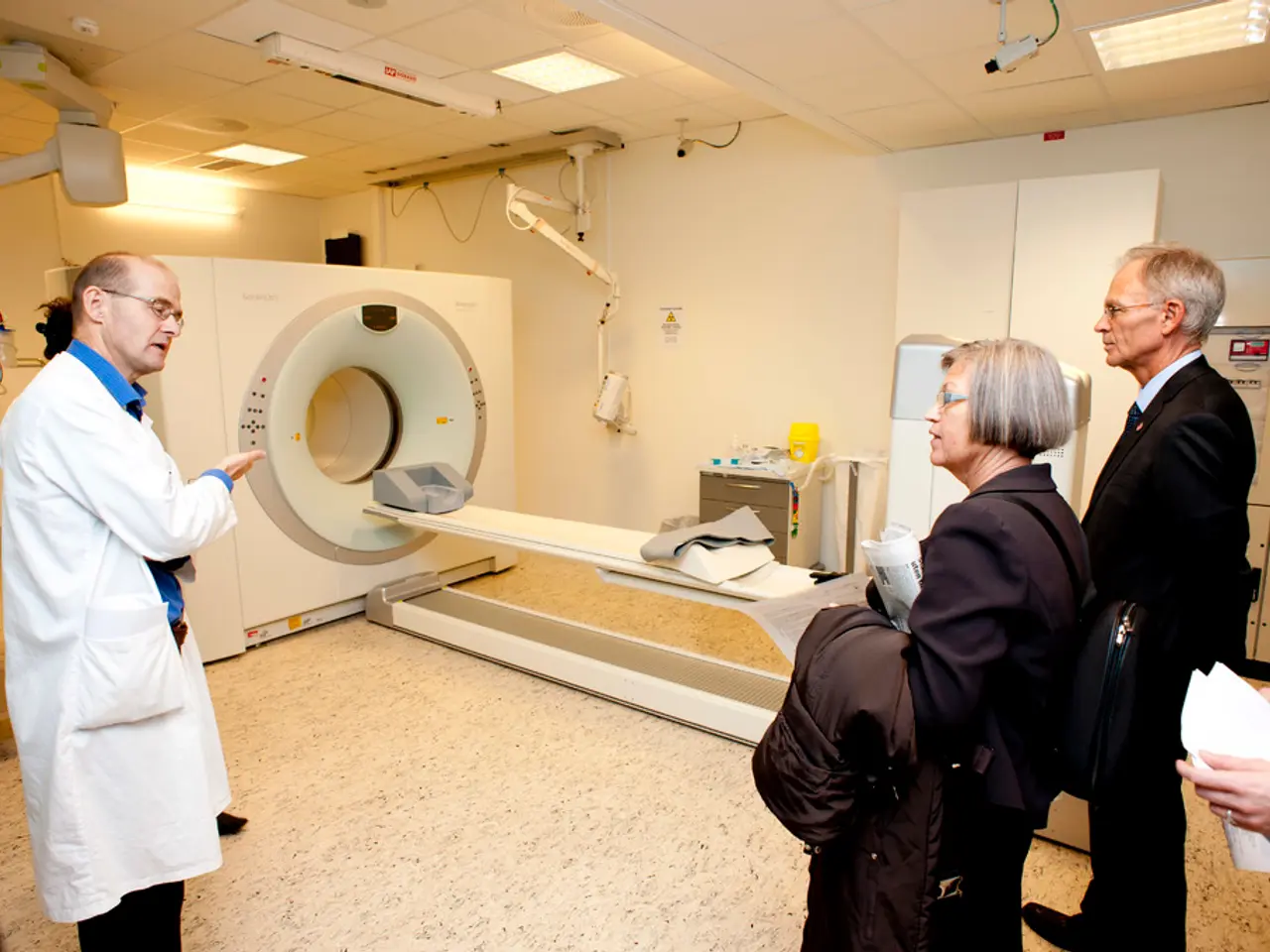Myeloma cases among Black Americans: Data and insights
Disparities in Multiple Myeloma Diagnosis and Treatment Among Black Americans
Multiple myeloma, a cancer of the plasma cells in the bone marrow, disproportionately affects Black Americans, with a higher incidence rate compared to White Americans. According to a 2019 estimate, there are approximately 15.8 new cases of multiple myeloma per 100,000 people in the Black American population, compared to 6.9 cases in the white American population [1].
One of the key differences is the age at which multiple myeloma is diagnosed. On average, doctors diagnose multiple myeloma in Black Americans at age 66 years, while in white Americans, the median diagnosis age is 70 years [1].
Several factors contribute to these disparities.
Biological and genetic factors may play a role in the higher susceptibility of Black Americans to multiple myeloma. Researchers are still studying the exact genetic mechanisms, but it has been noted that Black people may have a higher likelihood of inheriting monoclonal gammopathy of undetermined significance (MGUS), a plasma cell disorder that sometimes precedes multiple myeloma [2].
Social determinants of health also contribute to the disparities. Lifestyle factors such as obesity, nutritional deficiencies like low vitamin D, limited access to healthy foods, and environmental exposures may increase the risk or worsen outcomes for Black Americans [2].
Access to care is another significant factor. Black patients often face barriers such as limited screening and diagnostic access, financial constraints, transportation difficulties, and mistrust of the healthcare system, leading to later-stage diagnoses and reduced access to timely, evidence-based multiple myeloma treatments [2].
Structural racism and healthcare inequities also influence the quality of care received, provider recommendations, and the availability of specialized treatment facilities in predominantly Black neighborhoods. These factors lead to disparities in treatment modalities, delays, and overall survival outcomes [2][4].
Socioeconomic and geographic disparities also impact health insurance coverage, healthcare utilization, and the ability to receive advanced therapies, exacerbating racial disparities in multiple myeloma mortality and morbidity [4][5].
To address these disparities, proven strategies include culturally tailored education, patient navigation programs to assist in screening and treatment adherence, policy interventions enhancing healthcare access (e.g., Affordable Care Act), and system-level changes like automated screening reminders and team-based care [2]. Research in similar cancers shows that equal-access systems, such as the Veterans Health Administration, can eliminate screening disparities, underscoring access as a critical lever [2].
In addition, increasing Black American participation in clinical trials is crucial for understanding why multiple myeloma disproportionally affects Black people and finding the most effective treatments for Black people. Black people may have a higher likelihood of having immunoglobulin A disease, which may increase the risk of multiple myeloma [3].
Moreover, Black Americans have a higher prevalence of health conditions that can increase the risk of multiple myeloma, such as obesity and diabetes [4].
Organizations such as the Multiple Myeloma Research Foundation are working to increase awareness and provide education and healthcare access to marginalized communities [5]. Financial stability is a major barrier to adequate healthcare for many Black Americans, and organizations like Cancer Care provide information on sources of financial assistance for people with cancer [5].
In conclusion, the higher risk and poorer outcomes for Black Americans with multiple myeloma result from a complex interplay of genetic susceptibility, social determinants, and systemic healthcare inequities. Addressing these requires multi-level, culturally sensitive interventions to improve prevention, timely diagnosis, equitable treatment access, and support services.
References: [1] American Cancer Society. (2021). Multiple myeloma statistics. Retrieved from https://www.cancer.org/cancer/multiple-myeloma/about/key-statistics.html [2] National Cancer Institute. (2021). Cancer health disparities among racial/ethnic minority populations. Retrieved from https://www.cancer.gov/about-cancer/causes-prevention/risk/minorities/cancer-disparities-fact-sheet [3] National Cancer Institute. (2021). Multiple myeloma risk factors. Retrieved from https://www.cancer.gov/types/multiple-myeloma/hp/multiple-myeloma-risk-fact-sheet [4] American Society of Clinical Oncology. (2021). Cancer disparities among racial/ethnic minority populations. Retrieved from https://www.cancer.net/navigating-cancer-care/cancer-research/cancer-disparities/cancer-disparities-among-racial-ethnic-minority-populations [5] Multiple Myeloma Research Foundation. (2021). About MMRF. Retrieved from https://www.themmrf.org/about-us [6] Cancer Care. (2021). Financial assistance. Retrieved from https://www.cancercare.org/financial_assistance/index.html
- American scientists are investigating the genetic factors that make African Americans more susceptible to multiple myeloma.
- Inequities in the science industry can lead to delays in the development of therapies for chronic diseases like multiple myeloma.
- Workplace wellness programs should prioritize mental health conditions, particularly in multicultural workplaces.
- Cultural sensitivity is crucial in the delivery of therapies and treatments for autoimmune disorders among African Americans.
- Mental health discussions are essential in men's health, especially amidst the growing awareness of depression and anxiety among men.
- Skin care is a vital aspect of womens' health, with early detection and treatment being key in managing skin conditions.
- Parents must be aware of the potential link between multiple myeloma and cardiovascular health, as some medical conditions can increase the risk.
- Industry leaders are calling for enhanced oversight in the finance sector to improve healthcare access and coverage for all Americans.
- Medicare enrollment can be a complex process, but educational resources are available to help individuals navigate the process.
- Financial stability is a crucial determinant of an individual's health and wellness, particularly for African Americans.
- Fitness and exercise play a significant role in digestive health, and promoting these habits can lead to a healthier lifestyle.
- Eye health is crucial in maintaining overall health and wellness, and routine check-ups are essential, especially for those with a family history of eye diseases.
- Hearing loss can be a symptom of multiple myeloma, and regular auditory check-ups are recommended for early detection.
- In today's data-driven world, technology can help in tracking and managing multiple myeloma, offering personalized treatment plans.
- Relationship dynamics can influence one's approach to managing health conditions like multiple myeloma, andopen communication is essential.
- Sharing personal experiences with mental health issues can help break stigmas and promote a culture of openness in discussing mental health.
- Developing healthy lifestyle habits, such as a balanced diet and regular exercise, is crucial for managing skin conditions and maintaining skin care.
- Hospitals and clinics must invest in research to better understand the unique health needs of African Americans, particularly in the area of cancer.
- Pets can provide emotional support to individuals with multiple myeloma, helping them manage stress and anxiety.
- Traveling for specialized medical care can be a logistical challenge, and arranging accommodations is crucial for managing multiple myeloma.
- Sports can serve as a therapeutic outlet for individuals undergoing treatment for multiple myeloma, promoting physical and mental wellness.
- Baseball, hockey, golf, and other sports offer opportunities for social interaction and bonding for individuals with multiple myeloma.
- Sports betting can be an exciting pastime for some, but it's essential to manage one's finances responsibly.
- Basketball players are regular participants in charitable causes, raising funds and awareness for multiple myeloma and other health causes.
- Racing events can be a great opportunity to raise funds and awareness for multiple myeloma research, with many organizations hosting races for this purpose.




